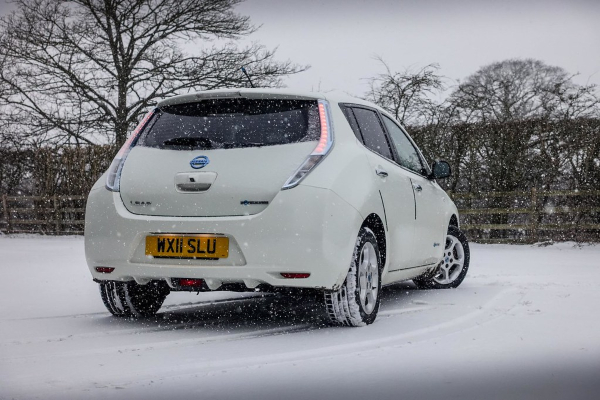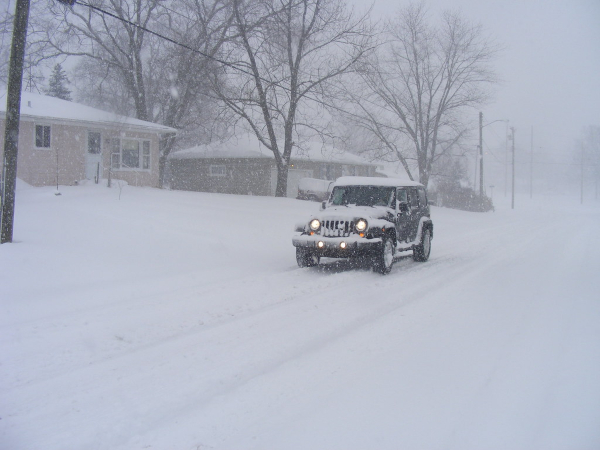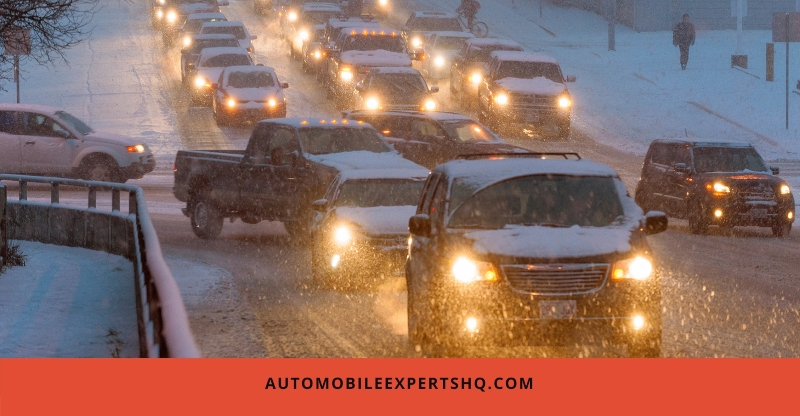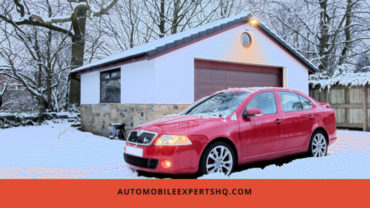10 Safety Tips For Driving In Winters
Only a few things are more unpredictable than driving in winter. You don’t know what is the condition of the roadways per square km. Yet you will have to face its consequences and be prepared if you want to reach home safely.
You can follow a couple of winter driving tips to brave the weather with utmost confidence this year. You might even have to adjust your driving style a bit to make it more suitable for the unstable winter season. Make sure that you and your family are prepared to drive safely this winter without giving up commuting by car altogether.
Winter Driving Tips
Read on to know the many ways you can drive better and stay safer come winters this year.
1. Avoid Fishtailing
The phenomenon of correcting the oversteer by a countersteer but failing to gain the controls of the car back is known as fishtailing. It occurs when your rear wheels lose the traction. This causes the car to flail around back and forth. The fishtailing occurs when the driver tries to correct the oversteer a bit too late.

Remove your foot from the brake and gently press the gas pedal to regain the control over your car steering in case of an all/front-wheel-drive car. Take your feet off the gas pedal gently and steer into the desired direction smoothly in case of the rear-wheel-drive car.
It can prove to be fatal since the constant back and forth motion gives the skid enough momentum. Eventually, this momentum can make the car jump off the road if not corrected on time. This is why it is best not to step on the gas and brake pedal furiously in case of fishtailing.
2. Wheel Lockup Prevention
You brake too fast on an icy road. The tires are not able to get enough traction or stop the motion of your car this abruptly. And this makes them dysfunction to lose control altogether. This is known as the wheel lockup. It is basically you braking at a speed too fast for the surface your were driving on at that moment.
The ABS braking system takes care of this for you. You might not have to worry about this at all if your car is fitted with the latest ABS. It will make the brakes pulse and be applied in a gradual fashion for you so that the problem of wheel lockup never arises.
It will also increase the stopping distance between your car and others in case you are driving on a slippery/ice-covered road that might cause the wheel lock up as a preventive measure. If you don’t have an ABS system they you can just avoid slamming the car brakes. This will keep you safe from the wheel lockup troubles.
3. Don’t Understeer
The understeer happens when you cannot make a certain turn on the road at an elevated speed. Your car is going too fast at that point to match up to the sharpness of that turn. Here, you need to keep your foot off the gas pedal as you gently press brake. Try to bring down the speed of the car in a gradual manner. Soon you will find your car at a suitable speed when you can make it turn easily.
Avoid trying to fight this understeer skid by slamming the gas or brakes. It will be making the problems much worse where it can be fatal. You might ultimately lose all control of your car with it. And, the car will use all the brake and gas pedal inputs to skid at breakneck speed all over the path.
This puts you at high risk from other vehicles and just the surrounding landscape. The overall acceleration of the car needs to be decreased smoothly so that you are able to maintain the route without hitting anyone or your car.
4. Avoid Wheelspin
You won’t be suffering the wheelspin problem as much in case of the all-wheel-drive cars. The wheelspin occurs when the gas input is not getting translated in the ground. This is because the ground is too slippery because of the ice to gain traction on. This discourages the wheels from going as fast as you would like as you pedal the gas. And causes the wheels to just spin on their axis.

In the older car models, the downshift method can help to keep the wheelspin away. These cars use the manual transmission. Just drive on a lower level for a while till the wheels gain back the traction. And then gradually increase the gas to improve the speed of your vehicle.
The non-driving wheels in case of the front/rear-wheel drive cars will stay motionless. This is because they are not getting any support from the motion of the driving wheels which are spinning out of control at the moment. Don’t try to accelerate to a higher speed as you see the icy path approaching. It won’t get you off it any faster. You might as well waste a lot of time there with your car in the wheelspin.
5. Black Ice Navigation
It is called black ice because the road that this ice layer covers gets a shiny black look. The black ice is formed when the temperature of the air and ground is below the freezing point. But that of the falling rain is just above or at 32 degrees. This causes the falling rain to freeze on impact.
It can also be caused when the temperature slightly raises above the freezing point. But then dips below after a while. It causes the white and easily visible snow to melt and freeze into a clear ice layer. It gets impossibly difficult to detect and drive safely on it without proper precautions.
Firstly, stay calm. Don’t panic or start slamming the brakes or accelerator in the chaos. Next, look for the patches in the black ice layer. That is where your car is most likely to regain traction. Keep the foot off the accelerator. Press lightly on the brakes. Sooner or later the black ice patch will end and you will most probably regain controls.
6. Stay away from Oversteer
The oversteer happens when the rear wheels lose control and start skidding. This happens when the driver decided to slam on the brakes sharply at the moment of making the turn. The car might get overwhelmed by the number and level of all these inputs. In this case, the car is already running at a speed too high to make any sharp turns.
In all/ front-wheel-drive cars, it is way more manageable. You just need to step off the brakes and slowly steer towards the desired direction as you gently pedal the gas. The oversteering happens in all kinds of cars during the winter season.
In case of the understeer, it is actually the vehicle that tries to compensate for the misstep and skids away in the process. The rear wheels go out of control and the driving path is diverted because of the malfunction of the rear wheels.
7. Check Tire Pressure
Your car needs to have properly inflated tires at all times. It should hit just right at the recommended level on the tire pressure gauge. The over-inflation or deflation both can be dangerous for the driver and the surrounding vehicles. You might already own a tire pressure gauge somewhere. If not then buy this inexpensive instrument from your nearest auto parts shop.
Ask the manufacturer of the car for the recommended tire pressure level for your specific car. Now, remove the end valves from both ends of the tire. Press down the tire pressure gauge quickly at the valve ends to get the correct reading. Take a couple of these to reach an accurate result. Now, fill in the air if the reading is below the recommended level.
And, let out a bit of air by pushing in the valve if the reading is above the recommended level. Driving with just the right amount of tire pressure adds mileage to your car and life to the tires. The mileage drop is directly proportional to every PSI (pound per square inch) drop of the tire pressure. When it crosses the 5 PSI mark then it poses a serious threat to the durability, traction, and handling of the car.
8. Get Correct Weather Update
You can never be over-prepared for driving in winters. It is advisable to at least read the headings of the weather update that day before heading out. This way you will be in the know of any upcoming snowstorm or heavy rain in the desired destination.
You need to track these updates especially during the winters when the roads can get blocked for days due a particularly heavy snow day. There is the traffic update too to let you know where you might get stuck in traffic for hours. And which freeway will let you straight to the destination in no time. The regular snow updates and real-time reports can help you save from making a bad decision the very last minute too.
You can go to government weather websites or news channel sites. All these online information outlets might have slightly varying data. Very soon you will find an actually useful site to get your daily updates from. You can even set alerts to get instantly notified in case there is seriously bad weather on your route that day.
9. Snowbank Survival
They seem to be these harmless pile of fluffy snow until your car gets stuck in it. It seems like you might be able to get past it with just a little more acceleration. But that is how the simple-looking snowbank traps a number of vehicles every day. It might become a major problem if you have hit a particularly big one and you are already low on gas.

When you eventually do get stuck, take the shovel out of your emergency box and get to work! Keep the flashlights on if it is dark outside. Clear all the snow in the pathway of your car. Remove the snow from around the tires, exhaust pipes and windshield first. Then try to sprinkle a bit of salt/kitty litter/sand around the wheels.
You might like to carry them in your emergency kit during the winter months. The snowbanks are everywhere and so are your chances of getting majorly stuck in them. Keep the wheels straight and try to drive at the lowest gear with the ‘4-wheel drive’ mode on. This will make all the wheels work towards getting the car out of the snowbank. Don’t spin the tires by overaccelerating when stuck. You can rock the car a bit too to loosen the grasp of the snowbank around the car if possible.
10. Bust Half-Tank Myth
It is a popular belief that keeping your gas tank at least half-full will keep the fluids in an unfrozen state within it. This is not at all true. There is condensation and subsequently, fuel lines get frozen. If there is very little fuel left in the tank then it will most likely get condensed.
This condensation will then freeze again in the fuel lines. All this will stop you from getting your car started at all in the morning. A full tank makes it heavier. This translates to more weight in your car. Greater the weight, better the traction when you are particularly losing in that department during the winters.
You don’t need to keep your tank filled up till midway to keep it from freezing. Gasoline does not freeze just because it is winter season. It freezes when the fuel level is particularly low just like most of the other fuels would too. Keep the fuel tank topped up to stay out of trouble at all times.
You can keep yourself, your family and everyone around you safe and sound by driving keeping in mind the above driving tips this winter.
Conclusion
Driving in winters is messy, tricky and dangerous. Only if you don’t follow the tips mentioned above. You can always learn to make the most out of the winter season. Carpool as much as you can. Try cycling and other eco-friendly options on days you don’t want to risk a commute by car. Or, practice around the tips mentioned above in your car for a couple of weeks before they become second nature.
What do you hate the most about driving in winters? Do you already follow any of the safety precautions mentioned above? Let us know in the comment section below. And forward this article to your family and friends for making their winters a lot more tolerable!








